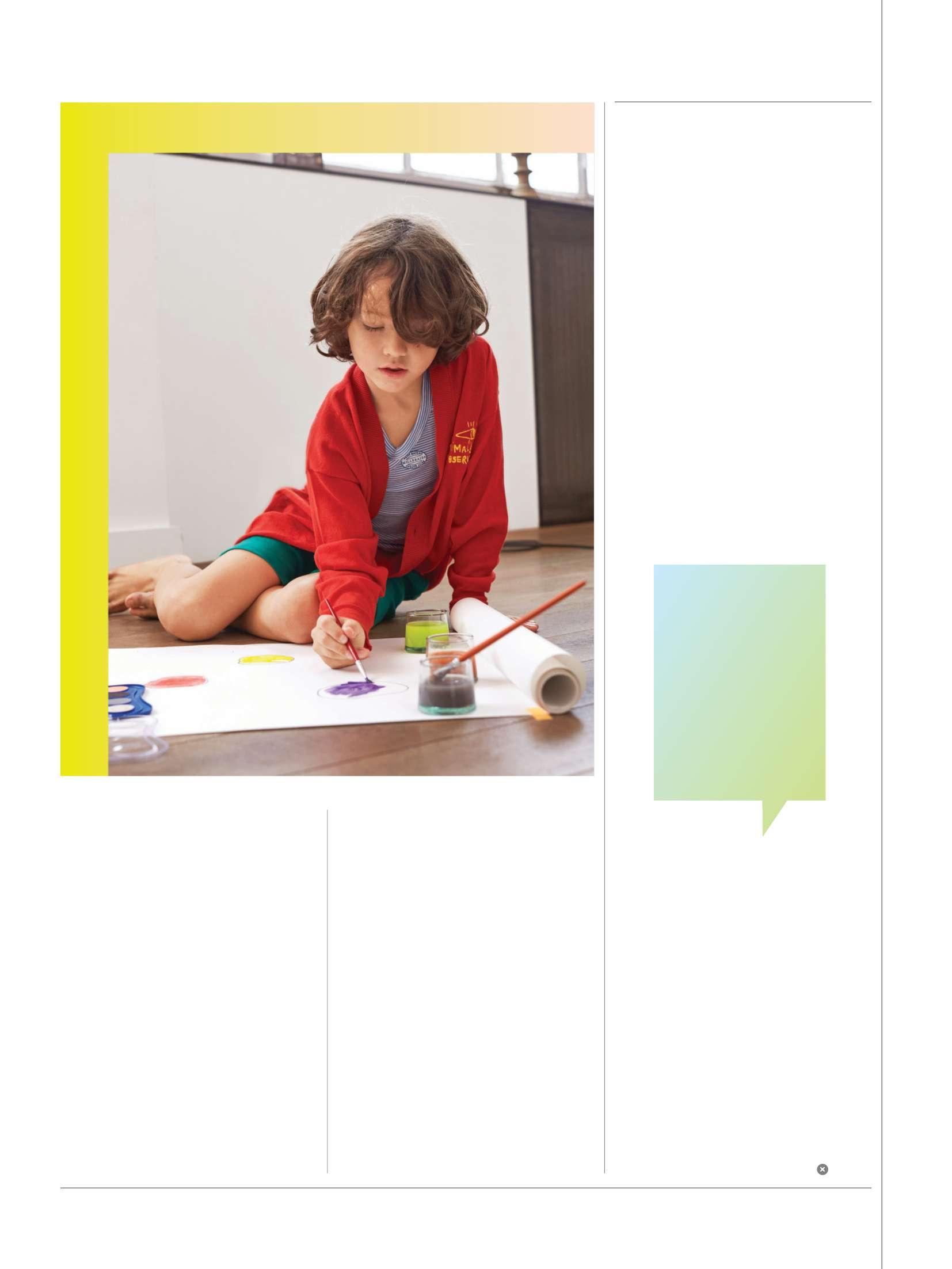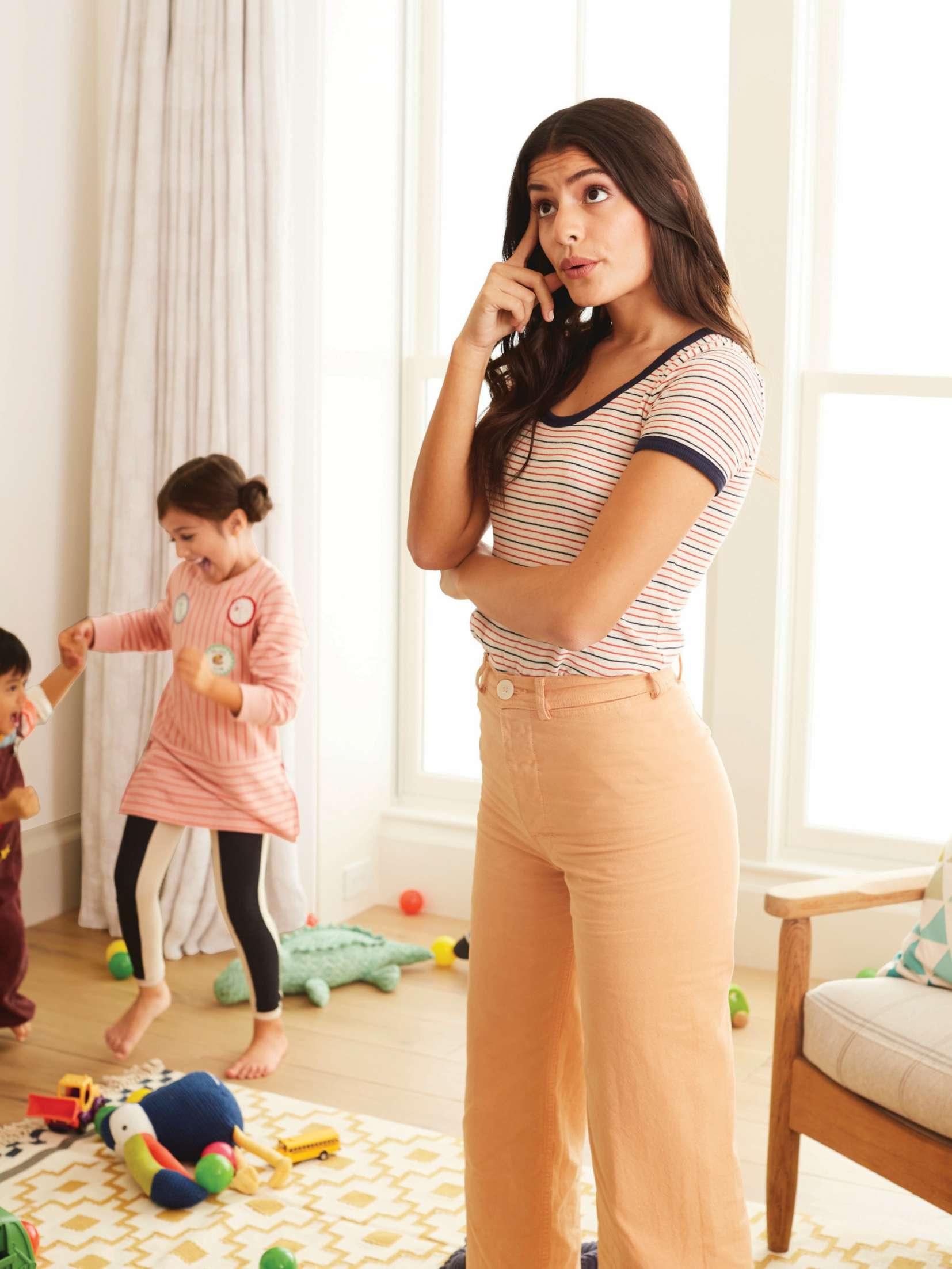
4 minute read
How to Quit Yelling
Drawing boosts learning retention in other subjects like math, reading, and social studies.
ones, and then say, ‘Oh, look, you can make it into a sun, you can make it into a snowman, you can make it into a f lower—let’s see what we can add!’ ”
Advertisement
Having them draw from life is key. “Put something down in front of them—like a vase with f lowers—and say, ‘Draw what you see,’ ” says Howard, herself a working artist at Jessica Howard Ceramics and Art. “Help them break it into sections and use their eyes to find the different lines and shapes.” A house, for example, is made up of a square and then a triangle for the roof and a rectangle for the door. Add some more squares for windows and have some fun with the landscaping! “You want them to be able to draw by looking at something for reference to give them a foundation, but also let them be free to make their students by displaying their artwork.” And nothing says success to a little kid like seeing their mini Cézanne tacked up on your family bulletin board. If your kid is churning out drawings at a rapid clip and you want to keep some of your walls for non-stick-figure art, have them pick three they’d like to hang and rotate them out periodically.
Remember to keep art light and fun. Wanting to make marks on a page is a natural, universal drive. It’s for everybody, and it should be encouraged. “An interest in art is innate, but skill is not,” says Fetter. “It’s not either you have it or you don’t. It’s something you can absolutely teach.” And we must.
own decisions when it comes to art,” Howard says. (If they want to learn to draw a bus or an ice-cream cone or a unicorn, print out a picture of those things and have them draw what they see). Another trick Howard uses with her classes: playing classical music. “It helps the kids stay calm and focused,” she says.
What can you do to enhance the experience? Help them notice proportion, balance, and perspective. “Really looking at what they’re drawing trains them to analyze, to consider various options, to think things through. That’s visual literacy, and the same observation skills that help you draw a cat help you spell cat,” Fetter says. Incorporate guided instruction when you can. Sign them up for art classes (look for after-school programs, free classes at your local library, even summer camps), or find instructional videos online. Young Rembrandts has a series of how-to clips on YouTube (their “How to Draw a Butterf ly” has more than 11 million views). Just try not to evaluate your child’s art—you’d be surprised by how much we do it without realizing. “Rather than saying things like ‘I like it’ or ‘It’s pretty,’ talk about the art itself,” Fetter says. “Mention the things you see: ‘That orange really pops next to that blue’ or ‘Your marker lines are very straight!’ ” Even better: Ask them to tell you about their drawings. “You’ll be amazed at the story they tell about just one drawing,” Fetter says. Then hang that zombie alligator ballerina up. “When a student feels successful in an area, they are usually eager to continue,” Hartman says. “Good teachers know how to encourage
How t o
Q u it Yel l i ng

You don’t want to shout at your kids, but it of ten seems as though that’s the on ly way they ’l l listen. Is it? I’ve learned from parents around the world that reacting in a different way ma kes everyone happier.
by M I C H A E L E E N D O U C H L E F F, P h . D . / photographs by P R I S C I L L A G R A G G
F O R Y E A R S , I relied on one primary parenting strategy: nagging followed by yelling. Sometimes I’d even yell to my 3-year-old, “Rosy, stop screaming!”
The notion of anger-free parenting seemed a bit like the keto diet. I knew I shouldn’t eat so many carbohydrates, but it was just too hard to resist that big bowl of pasta. Doesn’t everyone yell at their kids when nobody’s looking?
Turns out, they don’t.
For the past few years, inspired by my work as a reporter for NPR, I’ve been studying how moms and dads around the world parent without losing their cool. I’ve visited communities from the arctic tundra to the Tanzania savanna where parents rarely—even never—yell, scold, or nag their children. These parents taught me to how to discipline and motivate my daughter without resorting to anger, punishments, or bribes. I wrote about their approach in my book Hunt, Gather, Parent. The book also describes a way of raising helpful, confident kids—by cooperating with them rather than fighting with them—that parents have been using for thousands of years.
But once the book was published earlier this year, I discovered that I didn’t have to leave the country to learn about this level-headed approach. Readers emailed and told me they’d raised their children (or had been raised) this way in the United States. For example, Tiokasin Ghosthorse, a member of the Cheyenne River Lakota Nation of South Dakota who hosts and produces the First Voices Radio show, told me, “I never yelled at my daughter when she was growing up—and never have.” Stevie Benanty, who grew up in New York City, said, “My paternal grandmother raised me and my sister. She was a French-Algerian immigrant, who was just so soft and gentle by nature.











